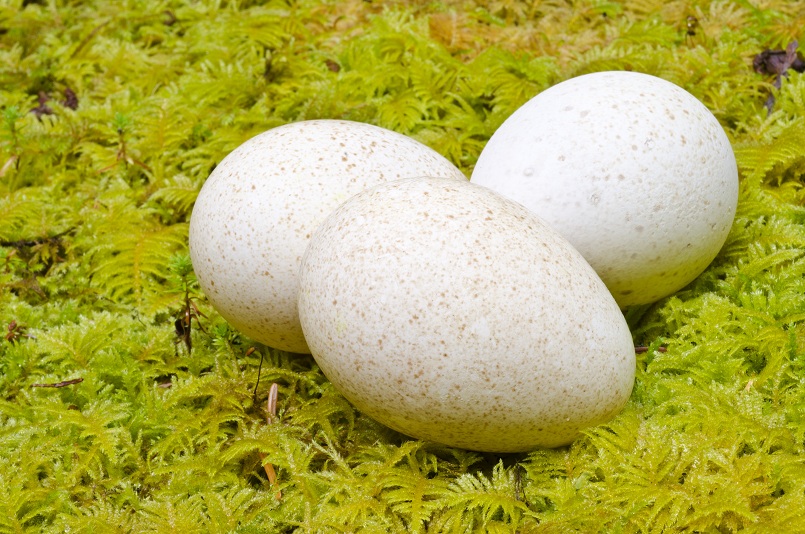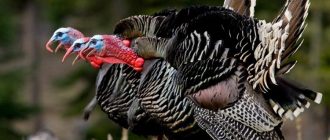Want to learn more about wild turkey eggs? Read on for facts and info on the eggs of the wild turkey…
The wild turkey is both a beautiful and delicious “chicken-like” bird that is associated with the feathery families of the quail, pheasant and grouse. It is regarded as being the largest feathered bird in all of North America. Wild turkey eggs are large in size and characterized by their unique pointed shape from one end.
The female wild turkey leaves her flock towards the end of April to find a suitable nesting location. The ideal natural environment for laying their eggs is a brushy or woodland area. It should be close to clearings and a water body.
The turkey builds its nest like a dent in the ground and lines it up with leaves and grasses. Most commonly they like to build their nests in areas that receive a natural camouflage. This is why you will find their nests to be hidden in fallen branches and logs or under the shade of grass and shrubs. Choosing such locations is imperative to ensure the safety of the wild turkey eggs from likely predators.
The female turkey lays one egg on a daily basis until the total egg count in her nest reaches an average of a dozen eggs. The oval and point eggs measure approximately 2.5 inches. Wild turkey eggs have a light tan color and are dotted with brownish specks on the surface. The eggs start hatching after 28 days of nesting.
As the young turkeys emerge from their eggs they are covered with a fuzzy and fine brown colored coat. Since small turkeys are considered to be tantalizing treats for many predators out in their wild, it is their natural instinct to learn how to hide as soon as they are born. They are quick to learn the warning call of their mother on hearing which they hide and freeze in their position until all signs of danger are gone.
When the time is right the mother turkey leads her young to the open areas where they can feed on their own. Young turkeys, known as poults, like to feed on a wide variety of insects including crickets and grasshoppers. They also peck on fruits and green plants.
The wings of the newly hatched take about two full weeks to develop. Once supported by their wings they can easily leave their nests and roost up in the trees. After a period of three weeks the entire batch joins a flock of turkeys to live a social life. It takes about six weeks for the poults to become good fliers.
It is important to note that the wild turkey looks very different from the conventional turkey that is found in the farms. It is relatively smaller in size, especially from its breast region. At the same time it has longer legs and a longer and slimmer neck. They vary with regards to the color of their feathers as well.





